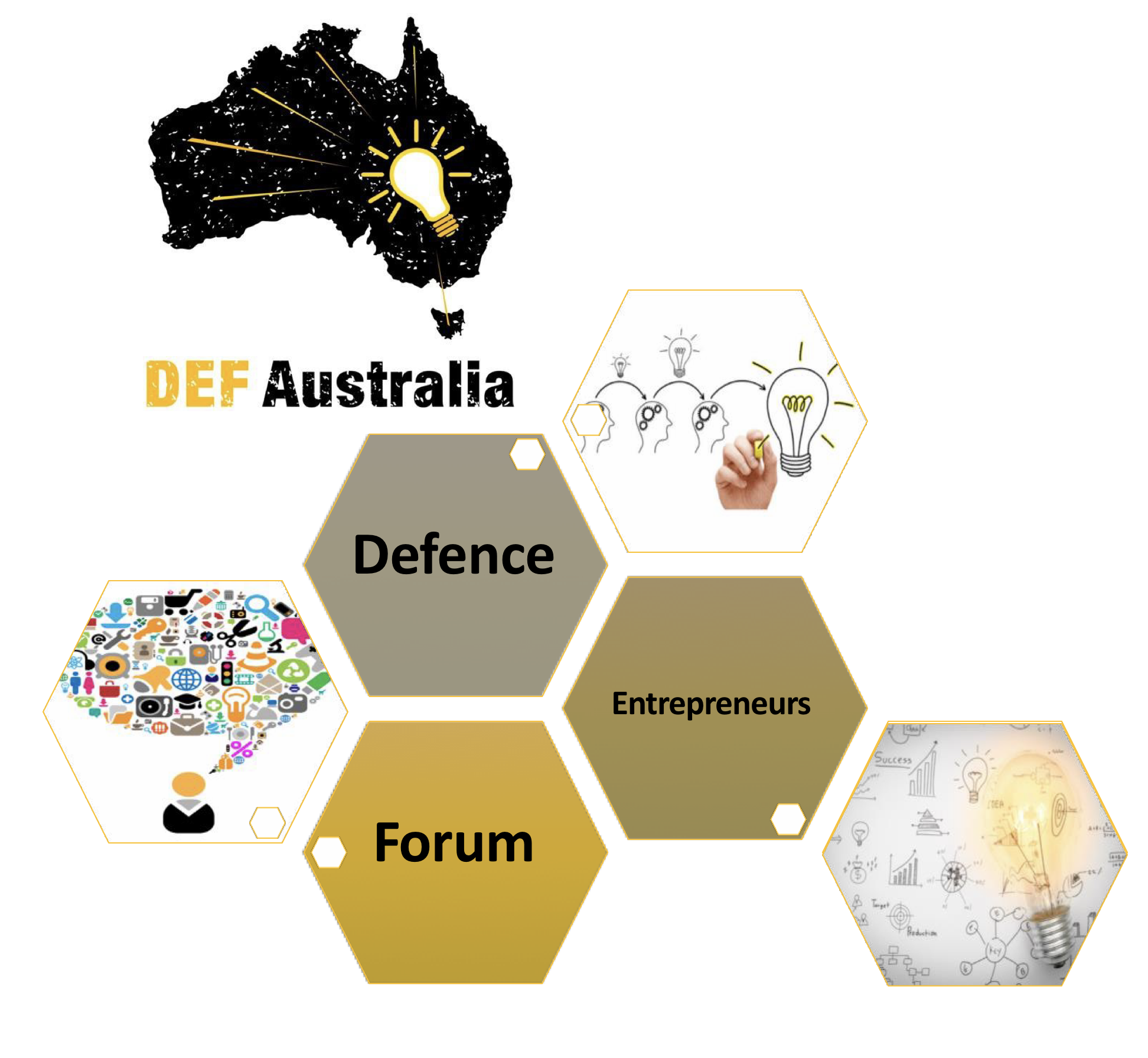This article follows from Pitch Perfect, and gives an overview to the pitch presentation, rehearsals and the all-important feedback loop for pitchers.
One week to go…
You’ve put in your proposal, and asked to travel to Canberra. It’s now time to invest in the actual pitch – the eight to ten minutes you’ll have on stage to sell your idea.
This article is designed to help #DEFAUS idea pitchers get their thoughts into a format that balances the entrepreneurial pitch template used in pitchfests or hackathons, with a more Defence-specific presentation that will link your idea with Defence outputs.
It’s worth noting that a good idea, defined and well developed, is just as important as a good presentation. I should mention that the below points worked for me, but you might have your own creative pitch ideas.
To move your idea into the pitch, consider the worst downsides you want to address in the problem set and ensure you address these with your solution. For example, my idea, #LOGBOTs, was designed to be more survivable and more efficient compared to today’s Combat Support Service (CSS) capabilities. Questions that may help you think through the solution, and brainstorm it on a mind-map, include:
- How is this solution disruptive, instead of merely improving on the status quo?
- What’s an analogous problem and solution I can use to prove that this can work?
- Is this solution cheaper than the problem itself? If not, how do we justify the cost?
Sit down with somebody who knows about Defence’s work in the problem area you are targeting and find out more about funding lines, current projects and the right points of contact in Defence who might already be working on a similar solution. Use your mentor for these networks and keep your mentor informed of your progress: it’s good for accountability for deadlines as well as ensuring you can tap their expertise.
Your mindmap will lead you to write the narrative, not the slides – it’s important to note that you are not going to give a dot-point-brief, or read off the slides. Tell the “story” of your problem, solution and why Defence needsthis disruption. If it helps, draft your own storyline and narrow the advantages of this solution down to three core selling points – It should to be catchy, directly support your idea and memorable to the audience. Moreover, at this point, if you haven’t settled on a good branding for your idea, look at those selling points and rename your idea. A few weeks out from pitch day last year, I couldn’t figure out how to better call Swarmed Unmanned Logistic Vehicles and it was a mouthful. After re-reading this article I asked the author for permission to use #LogBots as the title. Eventually, the idea was synonymous with its core selling points: “Hard to find, hard to hit, hard to kill”. Get a good catchphrase that people can link to your name and idea.
Your narrative should somewhat fit the basics of a pitchdeck and there is no shortage of great pitch examples online. Check out this infographic for an idea of what a pitch worthy of Silicon Valley investment will look like, or this video from SlideBeans below. A few pitchers have also asked about the design for slides – I made mine from scratch on Microsoft Powerpoint, and recommend going simple, avoiding cluttered slides. Remember that the screen at Adams Auditorium is huge so don’t settle for low-quality graphics – if possible, rehearse with your slides, timed, in front of a large screen so that you can get an idea for what your final product will look like.
You’ll want to also rehearse until you are comfortable with the concepts you are briefing, and the flow of the narrative. Record this, play it back to yourself and get your family (even kids) to listen to your pitch and offer constructive criticism. If you only rehearse with Defence colleagues that are well-versed with jargon and acronyms, you’ll miss the DEF audience which includes civilian and industry members. Once your slides are complete, make sure you back it up on a USB and ensure you can email the slides – you may not need either but it helps just in case.
Finally, the feedback loop is important – your idea is going to draw feedback and it’s important to thank, respect and address those feedback points in your pitch. Keep a notebook for your idea that includes feedback from stakeholders and make sure you can contact them for follow up if required. Following my pitch last year, I was able to follow up with those who had offered their expertise, and also refer others to these networked contacts.
If you find yourself sweating about the daunting pitch for Tuesday, keep working with your mentor and seek experts in Defence who can offer their insight: Don’t forget to acknowledge them at the end of your pitch, and do invite them to watch you pitch on Tuesday at ADFA (there’s also the livestream, if they can’t make it). The beauty of #DEFAUS is that ideas from junior leaders make waves within Defence, and there’s the potential your idea will link with others to provide Defence with an edge in tomorrow’s battle space.
Good luck to this year’s pitchers and make sure you follow #DEFAUS19 on Twitter!
About the Author: Jacob Choi was last year’s DEFAUS winner for his pitch on #LOGBOTs

